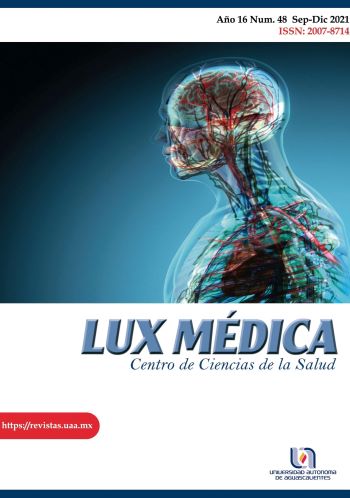Bibliographical review of the most recent advances in the etiological understanding of Alzheimer's disease
DOI:
https://doi.org/10.33064/48lm20212964Keywords:
Alzheimer disease, amyloid β-peptide, tau protein hyperphosphorylation, vascular diseases, APOE-4 alleleAbstract
Alzheimer disease (AD) is a neurodegenerative condition, characterized by continued and homogeneous disintegration, which causes the progressive loss of memory and impairment of cognitive abilities. AD represents more than 60% of dementia in elderly people, up to 65 years old or more, with a predominant involvement of frontal and temporal brain lobes. The two main hypothesis regarding the development of AD are tau protein hyperphosphorylation, which in normal situations is part of the neural axons, as well as in charge of the union of microtubules associated to the cytoskeleton of the cell, whose malformation may result in neurofibrillary tangles and neuronal death; and amyloid hypothesis, which describes the accumulation of Aβ plaques, generated by extracellular aggregation of insoluble amyloid-β-peptide. In this review article a thorough research on modern literature rewarding Alzheimer’s disease etiology was made, creating a recompilation of the most recently studied mechanisms regarding AD, and how they may interact with each other; including the latest advances on tau protein, amyloid β-peptide, APOE-4 allele, mitochondrial dysfunction, vascular diseases and α-Synuclein protein among others; as well as the main brain regions affected by this disease. In addition, different treatments based on the known etiology were researched, looking towards the elimination of parenchymal and cerebrovascular Aβ deposits along with the cease of neurofibrillary tangles, both well-known characteristics of Alzheimer.
Downloads
Published
How to Cite
Issue
Section
License
Copyright (c) 2021 Uziel Téllez

This work is licensed under a Creative Commons Attribution-NonCommercial-ShareAlike 4.0 International License.
La revista Lux Médica está bajo una licencia de Creative Commons Reconocimiento-NoComercial-Compartir Igual 4.0 Internacional.












